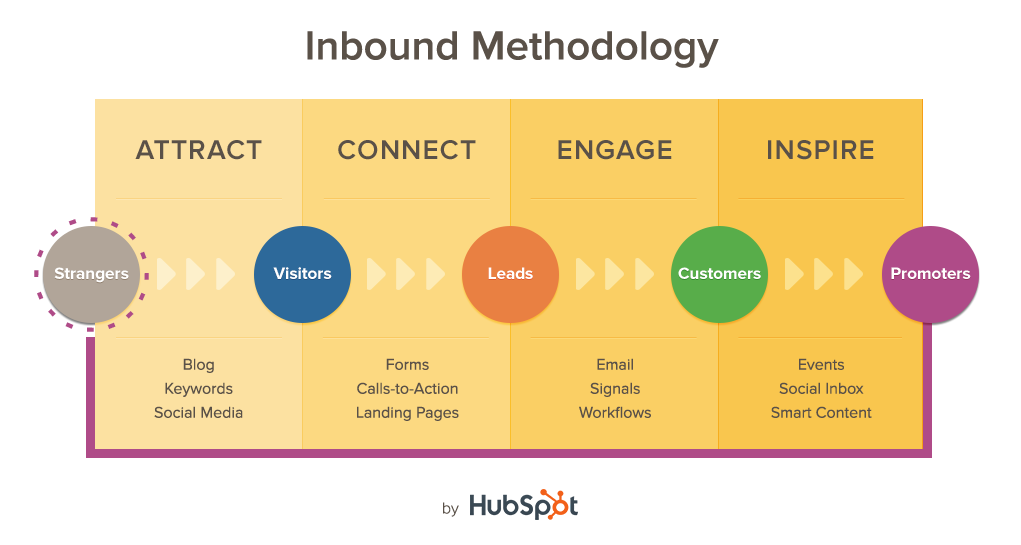Grow your fan base: How nonprofits can use inbound marketing
One of the fundamental concepts in growing your audience organically is inbound marketing.
Simply, inbound marketing is the approach of bringing prospects in through sharing helpful, relevant content. A prime example of this is with a blog. You help readers solve a problem or answer a question and along the way you introduce them to your organization and how great it is. The hope is they realize they want to engage with you or contribute to your cause further.
Easy, right?
If only.
There can be a lot of old marketing baggage at organizations that will get in the way of this approach. If you have ever been tasked with a cold call campaign, print ads, or a direct mail campaign with expensive glossy pamphlets, you know what I mean. These efforts are so entrenched in how people think about marketing that most nonprofits still find their budgets and time dominated by these approaches.
But there is another way, and not only is it a lot more fun, it’s also cheaper to manage. You can do inbound marketing with zero dollars by starting a blog.
Eventually, you will likely want to buy a marketing automation tool like Pardot or HubSpot to centralize all your marketing efforts, but even then the license cost for these tools is comparable to what you’re probably already spending on one-time ad campaigns that show a limited return on investment, or ROI.
So how can you start building a culture of inbound marketing?
Begin by thinking about your constituent journey. Here’s how inbound marketing looks in the context of a customer journey according to HubSpot:

Now let’s break down each stage to see how this is relevant for nonprofits.
Attract
This first stage is to drive awareness through your organization to strangers. One of the best tools to do this in your arsenal is keywords, the particular words or phrases that describe the contents of your website or pages.
Start by doing some research to find out what keywords are appropriate for your industry. Moz has a great tool for this. Then make a concentrated effort to integrate these into your web copy. Or, better yet, start a blog with content focused on some common questions that people ask your organization or inspirational stories about your work.
Prime example: Disaster response nonprofit Team Rubicon does a great job at using keywords with their blog posts, such as How Team Rubicon Serves Communities in Partnership with the American Red Cross.
Another great way to integrate keywords and raise awareness for your nonprofit is through social media. Monitor what hashtags your audience is using and the type of conversations your constituents are having. You can do amazing monitoring through advanced tools like Salesforce’s Social Studio, but you can also go a long way with simpler tools like Hootsuite and Buffer.
Do this: Start tracking monthly organic search volume through Google Analytics if you’re not already. Ideally, it should increase as you pursue an inbound marketing approach.
Convert
Once you have attracted people to your organization’s website, you need to get their contact information if you want to have any hope of continuing to build a relationship. This is called a conversion and typically happens when someone fills out a form. You can use forms to capture contact info from prospective volunteers, members, or donors.
The key to increasing conversions is integrating calls to action (CTAs) into your web content so that at every point someone can take the next step and engage. For example, you can increase conversions by having a button with a CTA of “Donate now”, “Sign up to be a volunteer”, or “Register for our event”. All your CTA buttons should be connected to a form, not just a page with contact information.
You can use many form tools, from Salesforce’s web-to-lead to FormAssembly - the important part is to make it a user-friendly experience that feels like a fair transaction. The golden rule is your best guide here: think about your experiences filling out forms, and how many fields of information you are usually willing to give to.
Filling out a form is a transaction where you give your information in exchange for something (the ability to volunteer, find out about membership, or feel good by donating). Make sure the trade is fair and you are following up quickly.
Do this: In Salesforce you can set up a tag, which acts like a sticker or keyword to help you associate your records with your efforts. For example, you could have CTA for a donation form at the bottom of your blog articles with a tag “Blog”. Whenever someone donates through your form you can see the tag “Blog” and know where your new contacts are coming from. Outside of Salesforce, you can do this with a hidden form field in most form tools that maps back to your CRM.
Engage and Inspire
Once you have contact data, you can do so many exciting things. First and foremost, you can begin to segment your list and send relevant content to different types of constituents. Here are some examples of what this could look like for a nonprofit:
- Send a slightly different newsletter out to members vs. non-members
- Target people in a specific geographic area with a relevant advocacy campaign
- Say “Happy Birthday” in an email to donors or members on their birthday
- Promote your social media accounts, segment what account you promote by the contact’s generation and by known generational engagement
- Send an automated follow-up email a month or two after a donation with what their donation helped your organization accomplish
- Make your appeals to donors more relevant with appeals that are more in line with their last donation
The key here is you want to keep the conversation going in ways that feel relevant and special to them. By keeping your constituents at the center of every marketing decision you make, you are held accountable to making your campaigns both bring in new people and strengthen existing relationships. In this way, you retain and perhaps even move people up to new levels of engagement.
Do this: Look at your email click rates over time. They should be increasing as you segment and send more relevant content to different audiences because people feel more engaged.
Don’t get bogged down by the technology. Inbound is more about a philosophy shift than a software purchase. Starting down the path of becoming an inbound-centered communications department can ignite energy that goes far beyond the ROI of the number of new constituents that you bring in. It puts you in the driver seat with your constituents and their real-time personalities and, ultimately, guides everything you do.
Want to learn more strategies for your constituents engagement? We hosted a webinar all about moves management, the strategy for increasing engagement with smaller, promising donors and turning them into large advocates for your cause.
Click the button below to watch the recording for “Salesforce Apps for a Moves Management Strategy”.
















